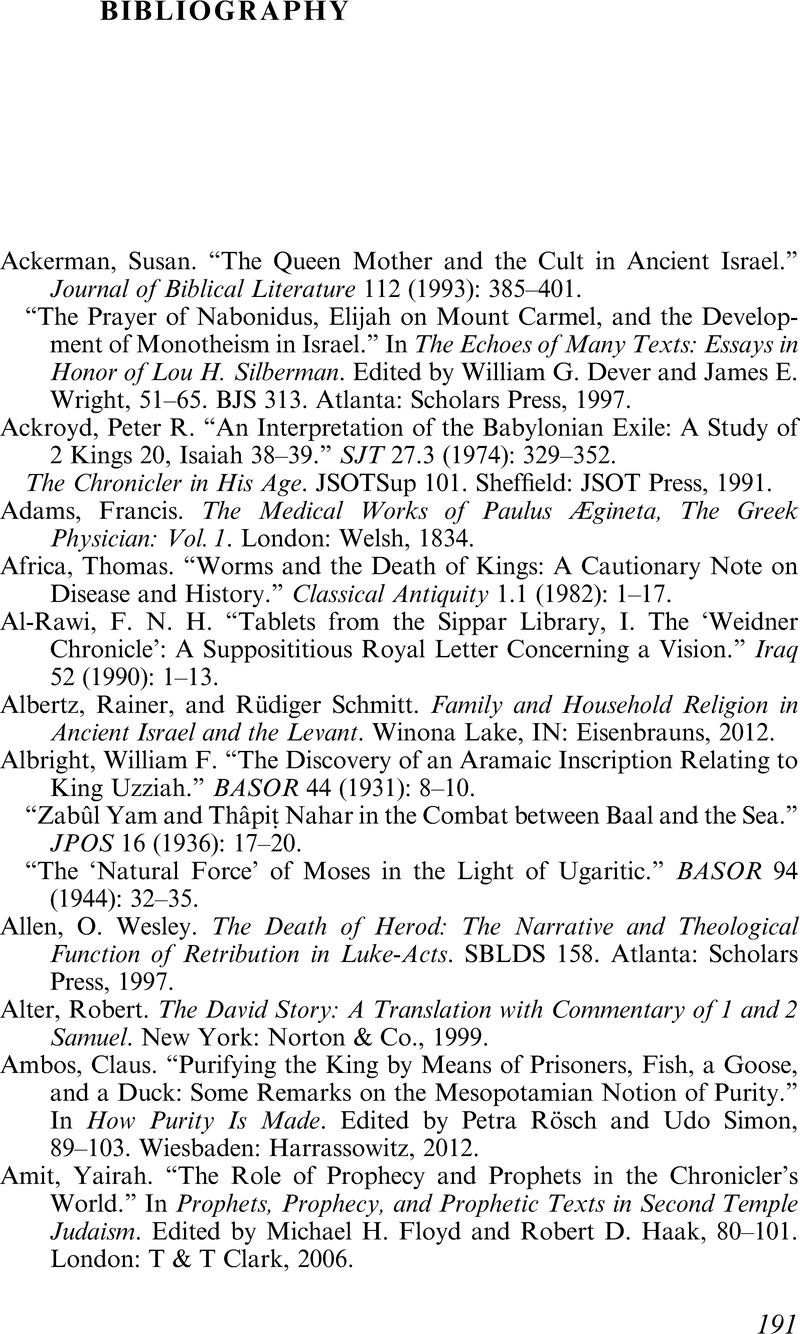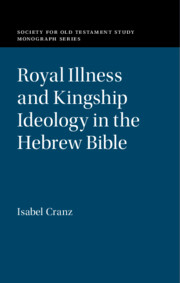Book contents
- Royal Illness and Kingship Ideology in the Hebrew Bible
- Society for old Testament Study Monograph Series
- Royal Illness and Kingship Ideology in the Hebrew Bible
- Copyright page
- Contents
- Acknowledgments
- Abbreviations
- Introduction
- Part I The Failure of Kingship and the Demise of the Nation
- Part II Flawed Personalities and Divine Judgment
- Bibliography
- Subject Index
- Source Index
- Author Index
- References
Bibliography
Published online by Cambridge University Press: 19 November 2020
- Royal Illness and Kingship Ideology in the Hebrew Bible
- Society for old Testament Study Monograph Series
- Royal Illness and Kingship Ideology in the Hebrew Bible
- Copyright page
- Contents
- Acknowledgments
- Abbreviations
- Introduction
- Part I The Failure of Kingship and the Demise of the Nation
- Part II Flawed Personalities and Divine Judgment
- Bibliography
- Subject Index
- Source Index
- Author Index
- References
Summary

- Type
- Chapter
- Information
- Royal Illness and Kingship Ideology in the Hebrew Bible , pp. 191 - 220Publisher: Cambridge University PressPrint publication year: 2020



